- Author: Elaine Lander
- Author: Karey Windbiel-Rojas
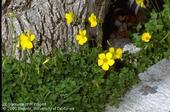
Recent wet weather in many parts of the state has spurred emergence of winter weeds. How these weeds are managed varies by the type of weed and where it's growing. In IPM, identification is always the first step toward effective pest management. A few common weeds you may be seeing in your garden or landscape now are profiled below.
Oxalis
Also known as Bermuda buttercup, buttercup oxalis, or sourgrass, this weed grows throughout California's coastal and inland landscapes. It can be a weed in lawns, flowerbeds, groundcovers, and shruby areas around the home. It has an upright growth with 3 heart-shaped leaflets and produces bright yellow flowers in late winter or early spring. See
- Author: Elaine Lander
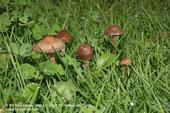
(Credit: RM Davis)
Recent rainfall and cool weather in many parts of the state are favorable for mushrooms that you may have been seeing in lawns. While they may be a surprising sight, mushroom-producing fungi are generally not considered to be a pest because most do not cause lawn diseases. Armillaria mushrooms indicate the presence of decaying tree roots below ground. Other mushrooms decompose underground organic matter and may be considered beneficial since they make nutrients available to lawns and other plants.
Mushrooms are the visible reproductive structures of some types of fungi. Picking or removing the structures can minimize the spread to a new site, but it won't kill the underground mycelia from which the mushrooms are growing....
- Author: Elaine Lander
- Author: Karey Windbiel-Rojas
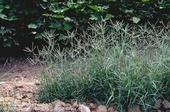
As the days get shorter and the temperatures begin to cool, now is the time to practice weed management for annual cool-season weeds. It's also not too early to consider management for weeds that emerge in springtime.
Using integrated pest management (IPM) methods can help reduce the presence of most weeds. In lawns, good practices such as proper watering, mowing, and fertilizing can help maintain healthy turfgrass. Likewise, in landscapes, hand-weeding, cultivation, and use of mulches can be effective in controlling weeds. More specific information about these and other IPM practices can be found in our Pest Notes publications on
- Author: Janet Hartin
- Posted by: Elaine Lander
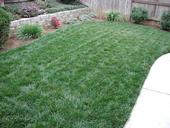
Your customers want their lawns to be beautiful and functional (Figure 1) but dead patches or other problems sometimes occur. Figuring out the cause of turfgrass damage can be a challenge since many plant pathogens affect grasses as well as numerous abiotic (non-living) disorders. can impact the quality of lawns, playing fields, and other turf areas.
Keeping turfgrass healthy is essential for reducing damage due to both diseases and abiotic disorders. Following recommended practices regarding irrigation scheduling, integrated pest management, fertility, mowing height, soil aeration, and other measures is your customer's best line of defense.
Identify the cause of...
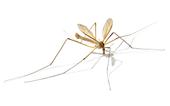
Warmer weather means many pests are flying and joining you indoors while you shelter-in-place or outdoors while you are getting some exercise or keeping connected yet socially distant from the neighbors.
Lately you may have seen some large, leggy insects bumbling around on your walls and windows. What are these? While many people call them “mosquito eaters” or “mosquito hawks,” they are actually crane flies. And unfortunately, they do not eat mosquitoes. These insects may be a nuisance when you find them in your home, but the adults are basically harmless. Although the adults are not particular pests of importance, the larvae can be...


